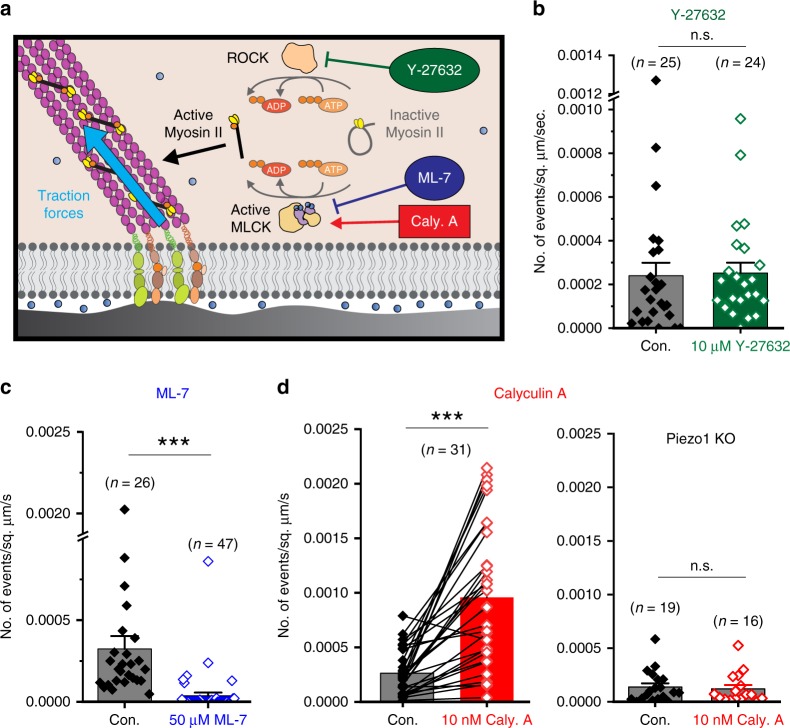Fig. 6.
Piezo1 Ca2+ flickers are evoked by MLCK activity. a Schematic of traction force generation by Myosin II. The enzymes Rho-associated protein kinase (ROCK, beige) and Myosin light chain kinase (MLCK, beige and purple) phosphorylate Myosin II (yellow and black) to generate the activated form that binds actin filaments (purple) and produces traction forces (blue arrow). The drug Y-27632 inhibits ROCK, the drug ML-7 inhibits MLCK and the drug Calyculin A potentiates MLCK activity, to alter traction force generation by Myosin II. b Bar and data plot of Piezo1 flicker frequency from WT HFFs in control imaging solution and in the presence of a 10 µM ROCK inhibitor Y-27632 showing that the drug has no effect on Piezo1 Ca2+ flickers frequency. c Treatment of HFFs with 50 µM ML-7 inhibits Piezo1 Ca2+ flickers. d Treatment of HFFs by 10 nM Calyculin A increases the frequency of Piezo1 Ca2+ flickers. Left, paired measurements of flicker frequency in the same fields of view in control imaging solution (gray) and 1–5 min after replacement of imaging solution with solution containing 10 nM Calyculin A (red). Right, 10 nM Calyculin A does not increase Ca2+ flickers in Piezo1-Knockout HFFs (n.s. denotes “not statistically significant” and ***p < 0.001 by Kolmogorov–Smirnov test). In each panel, data are from three experiments; bar height denotes the mean of the data points, error bars denote standard error of the mean, and each point represents mean flicker frequency in an individual video; the number of videos analyzed from three different experiments is specified above each bar. See also Supplementary Fig. 5. Source data for c and d can be found in Supplementary Data

